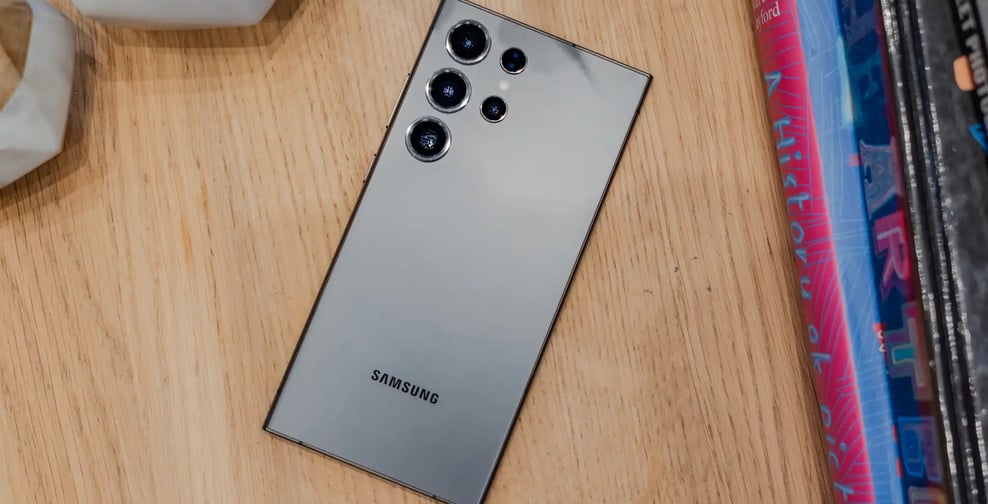The 10 Best Phones Available Now and How to Choose the Right One
7/7/20247 min read


Introduction
In a fast-paced world driven by technology, choosing the right smartphone can be a daunting task. With numerous options available, each boasting different features and specifications, it is essential to be informed before making your decision. This guide will highlight the 10 best phones available now, particularly focusing on the Australian market, and provide insights on how to choose the right one for your needs.
Top 10 Phones in Australia
Here is a list of the top 10 smartphones currently available in Australia:
1. Samsung S24 ultra -
If money is no object, the S24 Ultra is the best smartphone you can buy right now.
Samsung has put that high price tag to good use, delivering a superb user experience with no real weaknesses. And there are a catalogue of major strengths, from incredible overclocked Snapdragon 8 Gen 3 performance to five distinct camera lenses, each of which more than hold their own.
You still get a gorgeous 6.8-inch AMOLED display and built-in S Pen, yet this is still a two-day phone for many people in terms of battery life.
What’s more, the the software experience is the best it’s ever been, with a slick One UI skin over Android 14 and seven years of both OS and security updates. A selection of genuinely useful AI features are the icing on the cake.
The S24 Ultra’s price and big, bulky design aren’t for everyone. But it’s the most complete smartphone money can buy.
2. Google Pixel 8 Pro -
The Pixel 7 Pro was already an excellent smartphone, but the Pixel 8 Pro takes things to the next level.
Not only does the Tensor G3 chip boost performance, it enables a range of genuinely useful software features. Many of these improve the photography experience, where Google’s advanced processing and capable lenses deliver consistently excellent photos.
Android 14 on the Pixel is the cleanest and most intuitive software on any smartphone, and it’ll now be supported by Google for an incredible seven years. Add in a luxurious, premium build and price that still undercuts the top-tier flagships, and the Pixel 8 Pro is a superb smartphone.
However, it’s not all good news. The battery life and charging could still do with improvement, while the big, heavy design won’t suit everyone.
If the latter is an issue for you, the regular Pixel 8 is a better bet. But there are a few other differences between them.
3. Xiaomi 14 ultra -
Xiaomi’s flagships have taken excellent photos for a few years now, but the 14 Ultra takes things to the next level.
It’s the first smartphone that can genuinely replace a DSLR for most people, such is the quality and versatility of the system on offer. It includes four 50Mp rear lenses and a 32Mp selfie camera, all of which take superb photos in basically any environment.
And while expensive, the optional Photography Kit accessory makes the experience even closer to a real camera.
With a gorgeous design, stunning display, great performance and solid battery life supported by 90W fast charging, the 14 Ultra is one of the few phones that justifies its sky-high price tag. However, that also makes it unaffordable for many people, while the HyperOS software experience still isn’t great.
Those two factors prevent it from being higher in this list, but if photography is your top priority, this is the phone to buy.
If you’d rather something more affordable, the regular Xiaomi 14 is nearly as good when it comes to photography.
4. Apple I phone 15 pro - The iPhone 15 Pro has a collection of small changes that, when combined, represent a significant upgrade.
A new titanium build is durable but noticeable lighter, and there’s also a new customisable Action Button to replace the mute switch. Apple’s A17 Pro chipset is the most capable on any smartphone, and delivers truly stellar performance, while the introduction of USB-C is undoubtedly a step forward.
The 6.1in display is relatively compact by modern phone standards, but it looks excellent and benefits from the 120Hz refresh rate. Battery life is generally solid, though you’ll still have to put up with slow charging speeds.
But despite the missing 5x optical zoom on the telephoto lens, the all-round camera experience is superb. Many apps now support the genuinely useful Dynamic Island, and iOS 17 is just as slick and intuitive as ever.
For most people, the iPhone 15 Pro is the sweet spot in Apple’s 2023 smartphone range.
5. Google pixel 7 A -
The Pixel 7a isn’t Google’s latest mid-range phone anymore – that award goes to the Pixel 8a – but the upgrades don’t justify most people paying the premium.
At launch, the 8a was £50 more expensive than the 7a (same price in the US), but regular discounts on the older model still make it a better buy.
It’s still an excellent phone in 2024, with a great camera, solid performance and software support for four more years. And with a smaller 6.1-inch display, the Pixel 7a is much easier to use and pocket than many of the larger phones on this list.
However, 64Mp main camera is truly exceptional. There’s still no better phone camera for still images at this price, and barely any better at any price. You can buy the phone in playful blue and coral colours, or stick to white or black if you prefer.
The charging is very slow, and the added wireless charging was unreliable in our testing. But if you want an all-round Android phone with an excellent camera and great value for money, this is the device for you.
6 I phone 15 - There are two upgrades that make the regular iPhone 15 instantly better than 2022’s iPhone 14. The introduction of USB-C makes the device more versatile, allowing you to easily connect a range of different accessories.
And then there’s the Dynamic Island, the pill-shaped cut-out used to display a variety of useful information – it was previously exclusive to Pro models.
The iPhone 15 is very similar in other areas, but that’s usually not a bad thing. The A16 Bionic chip delivers small boosts to performance and power efficiency, with the latter helping deliver solid batter life.
With slick iOS software and a premium build, it’s the best value iPhone 15 model you can buy. But if a higher refresh rate display or fast charging are important to you, you’ll be better off elsewhere.
7. Motorola Razr 40 ultra -When you think of flip phones released in 2023, Samsung’s Galaxy Z Flip 5 is probably the first one that comes to mind. But while it is worth considering, the Motorola Razr 40 Ultra (known as the Razr+ in some markets) is a better choice for most people.
The 3.6-inch, 144Hz outer screen is the main reason for this. Not only is it significantly larger than rivals, you can run any app you like on it. The 6.9-inch, 165Hz internal display is just as impressive, with a crease that’s barely noticeable.
Despite two screens and a hinge, the Razr 40 Ultra feels impressively durable, and you also get an IP52 rating for water and dust resistance. Throw in solid battery life and a premium design, and you’ve got yourself a great foldable.
However, it’s not without compromise. The Snapdragon 8+ Gen 1 chipset is now two generations out of date, while the cameras are a step down from the absolute best Android has to offer. But neither should be dealbreakers for most people.
8. ASUS ROG Phone 5 - Samsung isn’t all about flagship phones and foldables – the company also makes some very good budget handsets. And the £199/$199.99 Galaxy A15 5G is the best evidence of this.
While not quite S24-level, the design is certainly inspired by Samsung’s flagships, and it looks almost as good. The 5000mAh battery also delivers excellent battery life, despite featuring a decent 90Hz OLED display.
The A15 5G doesn’t have a world-class camera system by any means, but the 50Mp main rear lens is surprisingly good for such a cheap phone.
One UI is also a big reason to buy the Galaxy A15 5G over non-Samsung rivals – it’s slick and intuitive. And three years of Android OS updates is plenty for most people.
Performance isn’t amazing, there’s no official water or dust resistance and charging is limited to 25W, but these are compromises worth making when you’re spending so little and getting such a lot.
If you don’t need 5G, the Galaxy A15 4G is also available for £169, but it’s not available in the US and there are other downgrades.
9. One plus 12 - The OnePlus 12 is significantly more expensive than the OnePlus 11, meaning it no longer takes the title of best value flagship.
However, it still undercuts most flagships on price, yet delivers everything most people are looking for in a smartphone.
Performance from the Snapdragon 8 Gen 3 chipset is superb, while the 120Hz AMOLED screen delivers a top-tier viewing experience. Even the main and telephoto cameras, a slight weakness of some earlier OnePlus phones, are now among the best around. However, the wide angle and selfie cameras could still be improved.
Battery life is strong, and it’s nice to see the 100W fast charging is now combined with fast 50W wireless charging.
OnePlus’ OxygenOS skin (now over Android 14) is still excellent, though the commitment to four OS updates and five years of security patches is a step down from the best of Google and Samsung (both seven).
But overall, the OnePlus 12 is a superb smartphone that’s easy to recommend. If you’re looking for a foldable, consider the OnePlus Open instead.
10. Samsung Galaxy S24+ For many people, the S24+ is the sweet spot in Samsung’s Galaxy S24 range. While you miss out on the S Pen support and Snapdragon 8 Gen 3 (in the UK; US models still get it), it’s still a fantastic phone in its own right.
They Exynos 2400-powered model we tested still offers very good performance, especially when combined with that high-quality 6.7-inch display and premium design. The cameras are good and battery life is excellent.
Other key features from the S24 Ultra do make it here, including the useful AI features, and superb seven years of software updates.
Besides slow charging and a still-premium price tag, there’s very little to dislike here
Factors to Consider When Choosing a Phone
To make an informed decision, consider the following factors:
1. Operating System: Determine whether you prefer iOS, Android, or another operating system based on your familiarity and preferences.
2. Camera Quality: If photography is important to you, look for phones with advanced camera systems and features.
3. Battery Life: Ensure the phone can last through your day without frequent charging.
4. Display: Consider the screen size and resolution, especially if you consume a lot of media on your device.
5. Performance: Check the processor and RAM to ensure the phone can handle your daily tasks smoothly.
6. Storage: Evaluate the internal storage capacity and the option for expandable storage if needed.
7. Budget: Set a budget and find a phone that offers the best value for your money within that range.
Conclusion
Choosing the right smartphone involves balancing various factors such as performance, camera quality, battery life, and budget. The Australian market offers a diverse range of options to cater to different needs and preferences. By considering the top 10 phones listed above and evaluating the key factors, you can make an informed decision and find the perfect smartphone for your needs.


